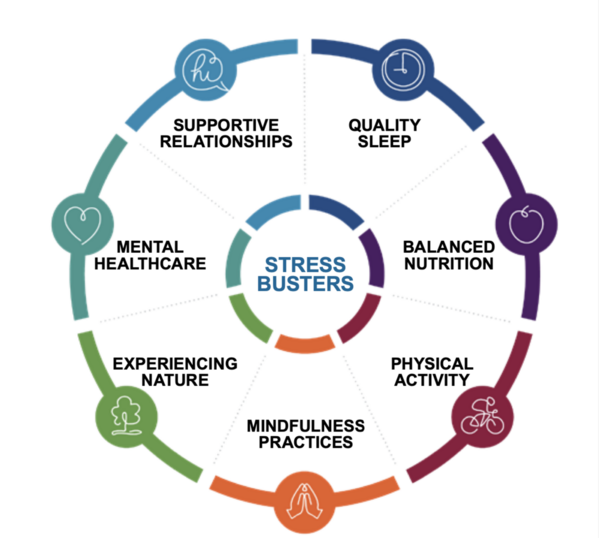Our interview for this profile took place over two continents, from the U.S. to Lima, Peru, where Lourdes Valdez, pediatrician in Butte County, California, for 23 years, was attending to family affairs after the death of her mother.
Valdez grew up in Lima, and later earned her medical degree in Peru before moving to Iowa City, Iowa, in 1992 for her residency. She said her mother helped make her a resilient person. Although working full time as an economist and statistician, her mother made a “special space for me every night” to recite “Margarita,” by Ruben Dario, a Nicaraguan poet.
In the poem, a very young princess asks her father, the king, to give her a star that she sees in the heavens. She travels into the heavens and steals the star, but her father tells her she must return it. She becomes very sad and then “smiling at her distress there stood the Lord Jesus Christ,” who lets her keep the star.
“My favorite part,” recounts Valdez, “was at the beginning when the princess is mentioned among the king’s most valuable possessions, and it says the princess was just like ‘you.’” When she recited that, her mother tickled her and her sister.
Having parents read poems and books to their children for 20 minutes a day is one of the experiences Valdez prescribes for healing trauma and building resiliency. Indeed, she initiated and found resources for First Five’s Reach Out and Read program, which offers a list of age-appropriate books for children from Scholastic Books that are just fun to read.
Her approach to trauma mirrors her career. After working for 18 years as a pediatrician at clinics focused on the large, underserved community in Butte County, CA, where she’s been a commissioner for First Five Butte County Children and Families, Valdez felt she wasn’t making enough of a difference by treating only individual patients. She felt a need to complement her practice and improve patient care by collaborating with local organizations and improving systems. That’s when she went back to school, to UC Berkeley, to earn a master’s in public health.
A First Impression about ACEs Screening
She didn’t learn about ACEs until 2016, when a colleague introduced her to the ACEs questionnaire. “My first impression” she says, “was to reject the process of being asked to just use the screening questionnaire without learning first about the science behind it. This was not a good way to learn about ACEs for the first time.”
Another objection she mentions: “The screening was too personal, too intrusive, and the questions were directed to the caregivers—the parents of the children who were my patients—so I was not sure how helpful the screen would be for the children and what I would do with the results.”
This introduction to ACEs, however, piqued her curiosity about the science. She read articles and books about ACEs and PACEs, including The Deepest Well, by Dr. Nadine Burke-Harris, with whom, as a fellow pediatrician concerned about trauma in children, she identified.
“How come this has existed for years and I’m just learning about it now?” she asks. “Reading about the science, the effects of toxic stress on not only mental but also physical health are so important, and they can be prevented and treated when needed.”
“I finally got it,” she continues. “But I believe that introducing the screening as the first introduction to ACEs is not the best way to start and learn about how to approach trauma and its effects. One’s first reaction can be like mine.”
Adapting ACEs to Provide Resources for Resiliency
Her approach to introducing ACEs is different these days. “Things have changed since that first introduction, and now we have plenty of educational opportunities, and the screening tools have improved significantly with de-identified forms and addressing social determinants of health. These changes us give us the opportunity to make a risk assessment, educate, prevent, intervene, refer, and provide resources.”
She learned that in addition to education about PACEs, attention needs to be focused on prevention and healing. “You have to learn and build your resources and work with your community,” she says.
Those resources include Reach Out and Read, which Valdez kicked off by spreading the word to her colleagues in Butte County, where more than 20 percent of the population is living below the poverty line. Mothers got back to her with enthusiasm, one saying it was the first book she had ever read to her child.
With the support of Karen Clemmer at PACEs Connection, Valdez is now working to integrate ACEs screening into her clinic, Feather River Tribal Health in Oroville, California, and is currently participating in a Trauma-Informed ACEs Screening & Intervention Evaluation (TASIE) Demonstration ProjectECHO Quality Improvement (QI) Program, an initiative of the Center for Youth Wellness: A Program of Safe and Sound, and the New Jersey Chapter, American Academy of Pediatrics (NJAAP), with funding from the U.S. Health Resources & Services Administration (HRSA).
In November 2018, the Camp Fire in nearby Paradise killed 80 people and left hundreds of families homeless. Valdez and her team had to treat people directly and also indirectly affected with what she calls secondary trauma. She said she and others felt so much survivors’ guilt, they didn’t feel it was right to celebrate the winter holidays.
The COVID pandemic compounded the fire tragedy even more, with an increase in mental health issues. Valdez urges the need to create positive experiences—“stress busters”—to help provide people with strategies to increase their resilience. Some of these include creating positive and calming experiences, like supportive relationships, reading to your child, mindfulness practices, exercising, laughing, listening to music, exposure to nature, and good sleep and nutrition.
When discussing the low COVID vaccination rate in Butte County, the pediatrician and public health worker immediately counters with her words of hope: “We have to vaccinate against ACEs, giving them PACEs.”




Comments (1)